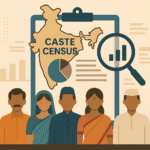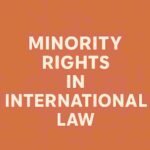Introduction
Human rights have traditionally focused on tangible and visible violations—torture, imprisonment, censorship, and discrimination. However, as societies evolve and the understanding of psychological well-being deepens, there is a growing recognition that mental peace and freedom from emotional abuse must also be enshrined as fundamental human rights. Emotional abuse, while less visible than physical violence, causes long-lasting harm and undermines a person’s sense of dignity, autonomy, and humanity. This article explores the definitions, elements, psychological and legal theories, international frameworks, and the growing advocacy for mental peace as a human right.
Defining Mental Peace and Emotional Abuse
🧠 Mental Peace
Mental peace refers to a state of psychological calm, inner balance, and emotional stability. It is the freedom from persistent anxiety, fear, trauma, or psychological manipulation. Mental peace is not merely the absence of mental illness but encompasses a holistic sense of mental well-being.
⚠️ Emotional Abuse
Emotional abuse, also known as psychological abuse, is a form of non-physical mistreatment that includes:
- Constant criticism, humiliation, or belittling.
- Manipulation, gaslighting, or controlling behavior.
- Isolation from friends or family.
- Threats, silent treatment, or withholding affection.
Unlike physical abuse, emotional abuse leaves no bruises but profoundly affects mental health, often leading to anxiety, depression, PTSD, and suicide.
Conceptual Foundations: Emotional Well-being as a Human Right
📜 Universal Declaration of Human Rights (UDHR)
While the UDHR (1948) does not explicitly mention emotional abuse, Article 3 and Article 5 provide foundational grounds:
- “Everyone has the right to life, liberty and security of person.”
- “No one shall be subjected to torture or to cruel, inhuman or degrading treatment or punishment.”
These clauses can be interpreted to include emotional integrity and mental peace.
⚖️ International Covenant on Civil and Political Rights (ICCPR)
- Article 7 prohibits “cruel, inhuman, or degrading treatment,” which can be extended to include severe emotional abuse in custody, homes, or institutions.
📘 World Health Organization (WHO)
WHO defines mental health as “a state of well-being in which the individual realizes his or her own abilities, can cope with the normal stresses of life…” This aligns with the idea that emotional safety is a core part of human dignity.
Theories Supporting the Right to Mental Peace
1. 🧠 Maslow’s Hierarchy of Needs
Psychologist Abraham Maslow placed psychological safety and love in the foundational layers of human needs. Without emotional security, individuals cannot self-actualize or live meaningful lives.
2. 📚 Capability Approach (Amartya Sen & Martha Nussbaum)
This theory argues that human rights should focus on what individuals are able to do and be. Emotional abuse limits capabilities such as reasoning, self-respect, and control over one’s environment.
3. 👥 Social-Ecological Model
This model sees individual well-being as influenced by interpersonal, community, and societal factors. Emotional abuse is a form of interpersonal violence that reverberates into public health, law, and culture.
Forms of Emotional Abuse and Their Impact
1. Domestic Abuse
One of the most common arenas for emotional abuse is within intimate relationships:
- Spouses belittling or gaslighting each other.
- Children growing up in controlling, fear-driven households.
- Elderly people being emotionally neglected or manipulated by caregivers.
2. Workplace Abuse
Toxic workplaces often lead to burnout, depression, and emotional trauma through:
- Micromanagement
- Bullying or public humiliation
- Passive-aggressive communication
3. Institutional Abuse
- Schools that practice shaming or ridicule.
- Detention centers or orphanages where neglect and dehumanization are normalized.
- Religious institutions that promote fear or guilt as control mechanisms.
4. Online Abuse
Cyberbullying, trolling, and harassment have created new frontiers of emotional harm, especially for adolescents and women.
Psychological Consequences of Emotional Abuse
Emotional abuse can have devastating long-term effects:
- Anxiety and panic disorders
- Post-Traumatic Stress Disorder (PTSD)
- Depression and suicidal ideation
- Dissociation and low self-esteem
- Inability to trust or form healthy relationships
According to WHO, over 280 million people globally suffer from depression, many linked to prolonged emotional distress or abuse.
Legal Frameworks: Gaps and Progress
1. 🏛️ National Laws
Most national laws prioritize physical abuse, but some countries are expanding to include emotional abuse:
- India: Emotional cruelty is punishable under Section 498A of IPC in the context of marital abuse.
- UK: The Serious Crime Act 2015 criminalizes controlling or coercive behavior in intimate relationships.
- France: Recognized “psychological violence” as a criminal offense in 2010.
- United States: Emotional abuse may factor into restraining orders and child custody battles, but criminal laws vary by state.
2. 📜 CEDAW (Convention on the Elimination of All Forms of Discrimination Against Women)
- Urges states to combat gender-based violence, including emotional and psychological abuse.
3. 🌍 General Comment No. 14 (UN Committee on Economic, Social and Cultural Rights)
This comment emphasizes the right to the highest attainable standard of health, including mental health.
Cultural Challenges and Invisibility
🚫 Normalization
In many societies, emotional abuse is normalized:
- “Tough love” parenting is equated with emotional neglect.
- “Strong men don’t cry” leads to emotional suppression.
- Verbal abuse is often dismissed as “anger” or “discipline.”
👻 Invisibility
Unlike physical violence, emotional abuse leaves no bruises, making it hard to prove in court or recognize in institutions.
Best Practices for Protection and Healing
1. 📞 Legal and Policy Interventions
- Expanding domestic violence laws to include psychological harm.
- Training police and judiciary to recognize emotional abuse.
- Strengthening workplace mental health laws.
2. 🧠 Therapeutic and Clinical Support
- Trauma-informed care and therapy.
- Community-based mental health services.
- Emotional intelligence education in schools.
3. 📢 Awareness Campaigns
- Public health campaigns to de-stigmatize therapy.
- Media programs to show emotional abuse as a real form of violence.
- Grassroots movements to encourage emotional literacy and boundaries.
Human Rights Advocates and Global Movements
1. Mental Health Advocacy Groups
- Mind (UK) and Mental Health America fight for the integration of mental well-being into public health policy.
- WHO Mental Health Gap Action Programme (mhGAP) promotes accessible psychological services globally.
2. Grassroots and Feminist Organizations
- #MeToo Movement brought emotional and psychological harassment to global attention.
- Breakthrough India focuses on emotional and gender-based violence awareness.
3. Legal Activists and Scholars
- Martha Nussbaum and Amartya Sen have argued for broader interpretations of rights.
- Flavia Agnes in India has worked on recognizing psychological violence within domestic abuse frameworks.
Future Directions: Recognizing Emotional Rights in the 21st Century
- Codifying Emotional Abuse in Human Rights Law
International conventions must explicitly include emotional and psychological integrity. - Mental Health as a Fundamental Right
Governments must treat mental health as equal in importance to physical health—ensuring universal access to therapy and emotional care. - Cross-disciplinary Collaboration
Legal systems, health professionals, educators, and digital platforms must collaborate to combat emotional abuse across all sectors. - Intersectionality in Emotional Abuse
Victims may face compounded trauma based on race, caste, gender, disability, or sexuality. A rights-based approach must account for these layers.
Conclusion
The right to mental peace and freedom from emotional abuse is not a luxury—it is a necessity for human dignity, equality, and justice. Emotional abuse, though subtle and often overlooked, undermines an individual’s humanity, prevents them from living fully, and corrodes social bonds. Recognizing emotional well-being as a fundamental human right requires an expansion of our legal, moral, and cultural frameworks. As the 21st century confronts pandemics of loneliness, anxiety, and digital aggression, this right must move from the margins to the mainstream of human rights discourse. Ensuring emotional safety is not just a personal concern—it is a public and global responsibility.
See Mental Peace United Nations. For more articles follow Rightsrecall.



